The 1970s Hippie Look: Style, Culture, and Legacy
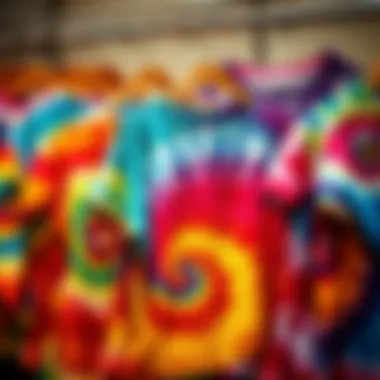
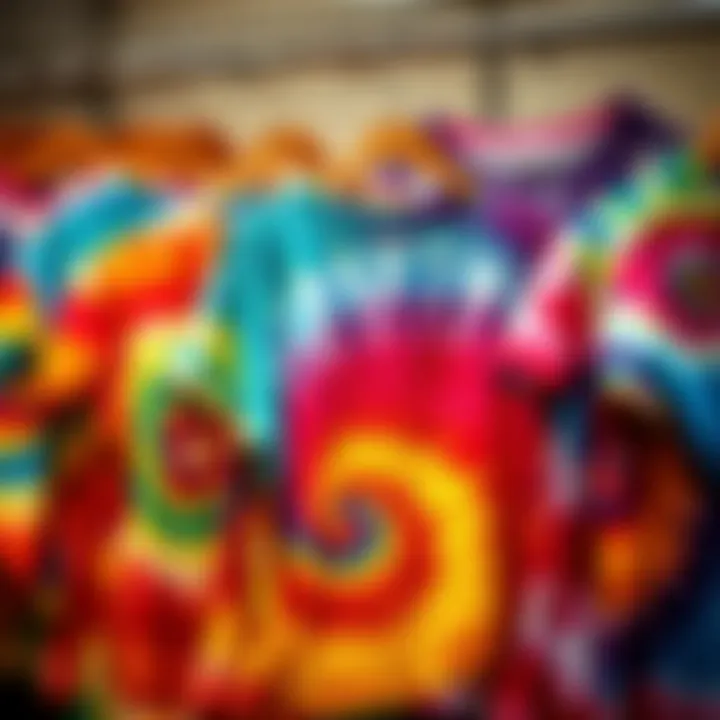
Intro
The 1970s were a time when fashion and culture were deeply intertwined. The hippie movement, a response to societal upheaval and a quest for idealism, left an indelible mark not just on hearts and minds but also on style itself. The aesthetic was vibrant and eclectic, standing firmly against the norms of the time. With flowing garments, bold patterns, and a strong sense of individualism, the hippie look captured the essence of freedom and self-expression.
As we dive deep into this exploration, we will dissect how clothing choices, accessories, and personal ethos merged to create a rich tapestry of style. The hippie look influenced not only the fashion landscape of the ’70s but also casts a long shadow that can still be felt in modern-day aesthetics.
Fashion Insights
Current Trends in Clothing
Fast-forward to the present, and remnants of the hippie style continue to resonate through contemporary fashion trends. Elements such as bohemian dresses, flared jeans, and tie-dye patterns have made a comeback, appealing to those drawing inspiration from the past while seeking a modern twist. Many current collections showcase these motifs, often coupled with sustainable materials, reflecting a growing trend toward eco-conscious fashion.
- Flowy silhouettes remain popular, enabling freedom of movement, reminiscent of the carefree days of the ‘70s.
- Earthy tones and floral prints are staples that harken back to hippie roots, often seen in festival wear today.
- Accessories, such as beaded necklaces and wide-brim hats, make a statement while paying homage to the carefree styling of the past.
Iconic Fashion Moments
The hippie era birthed some unforgettable fashion moments that still inspire designers today. Iconic figures like Janis Joplin and Jimi Hendrix embodied the spirit of the times, demonstrating how clothing could be a powerful form of expression.
- Woodstock Festival (1969) – A benchmark event not just for music but also for fashion. Attendees showcased unique styles that blurred the lines between comfort and high fashion, championing the idea that clothing should reflect one's personality and values.
- The Summer of Love (1967) – This cultural phenomenon celebrated peace, love, and freedom, paving the way for bold fashion choices. Bright colors, paisley prints, and layered clothing dominated the scene.
- Haight-Ashbury’s Influence – A San Francisco neighborhood that became synonymous with hippie culture. The style originating there laid the groundwork for what would be considered quintessential hippie fashion, influencing trends for decades.
"Fashion is the armor to survive the reality of everyday life." – Bill Cunningham
The essence of the 70's hippie look remains a shining example of how fashion can provoke thought and reflect cultural shifts. Today’s fashionistas can learn from this era, recognizing that the way we dress isn't just about style; it speaks volumes about who we are and what we stand for.
Preface to the 's Hippie Look
The hippie look of the 1970s isn't just a fashion statement; it's an emblem of an entire era that encapsulates a longing for change and the pursuit of freedom. The essence of this iconic style draws from a rich tapestry of cultural, societal, and political threads. It's crucial to understand not only what defined the hippie aesthetic but also what drove those who adopted it.
Essentially, this look represents a rebellion against traditional norms, wrapped in comfortable fabrics and vibrant colors. The transition from the restrictive fashions of previous decades to the flowing, expressive forms of the 70s embodied a cultural shift—a calling for peace, love, and a lifestyle that embraced simplicity and nature.
But diving deeper, one uncovers how various influences converged to create these trends. Not merely limited to clothing, the hippie look spanned across accessories, hair, and even psychedelic art, stirring a vibrant scene that resonated with youthful exuberance.
By exploring this topic, we peel back the layers of history and ideology influencing a generation. It’s about understanding the ethos that swirled beneath tie-dyed shirts and bell-bottoms. Gaining insights into how this style flourished amidst a backdrop of social upheaval enriches our appreciation of contemporary fashion, often tracing threads back to this very movement.
"The 70’s hippie look, a blend of comfort and expression, serves as a lens through which we can examine broader cultural shifts."
This article aims to shed light on the contradictions and nuances of the hippie look, offering readers a well-rounded perspective on how it still echoes through modern fashion and lifestyles. By dissecting both historical context and key influences, we're setting the stage to understand how this style not only marked its time but left a lasting imprint across decades.
Characteristics of the Hippie Fashion
Understanding the intricacies of hippie fashion from the 1970s plays a pivotal role in grasping not just the aesthetics of the time, but also the underlying ideals that shaped a generation. The hippie style wasn’t simply about looking different or making a fashion statement; it was rooted deeply in a sense of identity, freedom, and rebellion against the mainstream. The clothing and accessories that defined this era were nothing short of a canvas that represented the aspirations and dreams of those who donned them.
Clothing Styles
Flowy Dresses and Skirts
Flowy dresses and skirts are perhaps one of the most beloved symbols of the hippie aesthetic. The design promotes a sense of ease and comfort, which aligns perfectly with the carefree lifestyle many sought. Made often from light fabrics, these garments allow for natural movement and an airy feel, making them ideal for warm festivals and gatherings.
The key characteristic of these pieces is their fluidity. They move gracefully as one dances or walks, which visually embodies the spirit of freedom. Instead of rigid structures that confine, flowy dresses and skirts symbolize liberation—an idea cherished by the hippie movement. A unique feature of these garments is their diverse patterns—from floral prints to tie-dye, these styles encourage individual expression and creativity.
While flowy dresses are generally seen as a popular choice, they do come with considerations. Some may find them challenging for everyday wear since their style might be seen as too bohemian for more conservative settings. However, for the adventurous spirit, they remain a go-to ensemble.
Bell-Bottom Jeans
Bell-bottom jeans, with their iconic flared legs, serve as a staple in the wardrobe of the 70s hippie look. Originally rooted in maritime culture, these jeans morphed into a symbol of rebellion as they became a wardrobe staple for those who defied societal norms. The bell-bottom's wide leg opening provides a dramatic contrast to the fitted styles of earlier years, allowing for both a trendy and comfortable fit.
One of the striking characteristics of bell-bottom jeans is their versatility. They can be paired with a simple blouse for a casual outing or dressed up with bold accessories for an evening event. Moreover, their unique feature is the ability to flatter a range of body types, enhancing curves while promoting a laid-back vibe.
Despite their popularity, there are some downsides; for instance, they may not be suitable for all footwear styles, as certain shoes can get lost under the fabric. Yet, this aspect is often embraced, as a size up on footwear can create an even more eye-catching ensemble that remains true to the hippie spirit.
Graphic Tees
Graphic tees play a significant role in defining the 70s hippie look, merging casual advice with bold statements and artwork that reflect the culture's ideals. These tees often feature artwork inspired by psychedelic art and slogans that promote peace, love, and social change, making them a canvas for individual expression and commentary on societal issues.
The defining characteristic of graphic tees is their affordability and accessibility. Anyone can express their beliefs through this simple garment, which makes it a popular choice among the youth of the era. The designs can reflect anything from a favorite band to political messages, allowing wearers to showcase their unique interests and passions.
However, while graphic tees are incredibly beneficial in conveying personal and cultural messages, they differ widely in quality. Some may fade over time or wear thin quickly, which could be a disadvantage for those seeking longevity in their wardrobe. Regardless, their ability to initiate conversations and spark discussions about change endures.
Fabric Choices
Natural Fibers
Natural fibers were a hallmark of hippie fashion, chosen not just for their comfort but also for the environmental consciousness that marked the era. Fabrics like cotton, linen, and hemp were favorites among the hippie community as they symbolized a return to nature and a departure from synthetic materials. These choices are particularly important when considering the overall goals of the hippie movement, which often included a strong focus on sustainability and eco-friendliness.
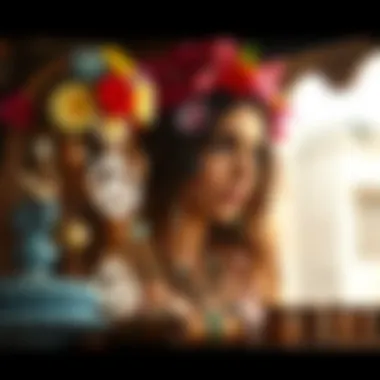

The main characteristic of natural fibers is their breathability. When worn, they provide comfort in a way that synthetic fabrics cannot, making them ideal for an active lifestyle often associated with festivals and gatherings.
One unique feature of natural fibers is their ability to deteriorate responsibly in the environment compared to synthetic materials. However, they can require more care in washing and may have a shorter lifespan without proper treatment, which is something wearers need to consider.
Bright Patterns
Bright patterns were everywhere during the 70s, serving as a joyful declaration of individuality and creativity in fashion. The intermingling colors and designs reflected the free-spirited nature of the hippie movement and fostered a sense of belonging among those who desired to stand out.
The pivotal characteristic of bright patterns is their ability to evoke emotions; they can uplift moods and contribute to a vibrant self-image. These patterns often featured motifs inspired by nature, symbols of peace, and spiritual symbols, which hold significant cultural meaning for many.
One unique feature of using bright patterns is their flexibility—they can be layered, mixed, and matched in countless ways to create a personalized look. However, the downside is that some patterns can clash when paired with different prints, which may lead to visual overload if not styled well.
Layering Techniques
Layering techniques play into the versatile hippie style, allowing wearers to mix and match various garments in a way that expresses their individuality. This style encourages creativity and experimentation, where anyone could mix flowy dresses with oversized jackets or belt a long tunic over a fitted top—choices that speak volumes in their uniqueness.
The core benefit of layering is the depth it adds to any outfit, helping to create dimension and textual interest while adapting to changing weather. A big characteristic of layering is its ease of transition from day to night, enabling fashionable transformations with minimal effort.
On the flip side, successful layering requires some planning. Selecting fabrics that complement one another is key, and it can sometimes overwhelm newcomers to the style. Nonetheless, mastering layering can lead to truly eye-catching ensembles that stand out in a crowd.
In summary, the characteristics of hippie fashion extend far beyond mere clothing choices. They encapsulate a lifestyle and values that remain relevant, encouraging personal expression, creativity, and a connection to larger ideals. This unique blend of aesthetics and ideology carries through generations, making the hippie look an enduring icon in the fashion landscape.
Accessories That Define the Look
When it comes to the 70's hippie look, accessories play a crucial role in completeing the aesthetic. They are more than just additions to an outfit; they are statements of individuality and signs of rebellion against mainstream norms. Each accessory tells a story, adds a pop of color, or provides a sense of belonging to a greater movement. Let's delve deeper into some of the key elements that define this iconic fashion style.
Jewelry
The jewelry during the hippie era was not just ornamental but also deeply symbolic. This was a period where personal identity expressed through accessories became a part of everyday life.
Beaded Necklaces
Beaded necklaces are a quintessential symbol of the hippie era. These necklaces often feature vibrant colors and various shapes, giving them a playful touch. Made from natural materials, like wood or stones, they resonate with the hippie ideal of returning to nature. Their versatility makes them a perfect complement to both simple outfits and more elaborate ones. These necklaces add an effortless vibe and express creativity in a laid-back manner.
On the flip side, while they are generally inexpensive and widely available, the fragility of some bead types can be a concern for those who prefer durability in their accessories.
Peace Symbols
Nothing embodies the spirit of the hippie movement better than peace symbols. Typically crafted into necklaces, bracelets, or earrings, these symbols are powerful reminders of the era’s anti-war stance. The simplicity of the design - a circle with a vertical line and two diagonal lines - makes it easy to wear and recognize. Peace symbols carry emotional weight and are often worn by those who identify with the values of love and non-violence.
The downside is that, given their popularity, they can feel somewhat ubiquitous; finding a unique piece that stands out can be a challenge nowadays.
Bohemian Styles
Bohemian style jewelry stands out because of its eclectic and artistic nature. It includes a mix of metals, gemstones, and intricate designs, often reflecting different cultures. It’s the kind of jewelry that tells stories and invites conversation. In the context of the hippie look, it aligns perfectly with the desire for freedom and self-expression. Bohemian styles allow individuals to showcase their personal stories and beliefs through accessories.
However, the downside here could be the cost - some bohemian pieces can be quite pricey, especially if they're handmade or sourced from local artisans.
Headwear
Headwear during the 70s hippie movement was not just a style statement but also a way to express individuality. Each piece served its purpose while also enhancing the overall eclectic appeal of the hippie look.
Flower Crowns
Flower crowns are perhaps the most recognizable headwear associated with the hippie lifestyle. They symbolize peace, love, and a connection to nature. Often made from fresh flowers, these crowns can vary dramatically in size and color. Their presence at events like music festivals and gatherings cemented their relationship with the free-spirited essence of the era.
While they bring a whimsical charm, the practicality might come into play; fresh flowers can wilt, making them somewhat temporary.
Headbands
Headbands were another signature of this movement. Often made of fabric or leather, adorned with beads or embroidery, they became a way for individuals to keep their hair in check while adding a personal touch. They have a playful feel and can range from bold patterns to subtle designs, appealing to different personalities.
Still, for some, headbands may not feel comfortable for prolonged wear, particularly during hot weather.
Wide-Brimmed Hats
Wide-brimmed hats, such as floppy hats or fedoras, were practical yet stylish. They offered protection from the sun, suitable for outdoor festivals or lazy days in parks. They also added a touch of sophistication to the laid-back hippie ensemble. The right hat can elevate a nuanced look and make it pop.
However, large hats can become unwieldy in windy conditions, potentially leading to discomfort and distraction.
Footwear
The choice of footwear among the hippies wasn't just about comfort; it also represented a rejection of conventional fashion.
Sandals


Sandals were a go-to choice during the 70s for hippies. Comfortable and casual, they allowed for breathability during warm weather. Often made of leather or eco-friendly upcycled materials, sandals can give a laid-back feeling to an outfit and facilitate a close connection to the earth.
However, they might not provide sufficient support for long walks, which can become an issue for active wearers.
Platform Shoes
These shoes not only added height but also made a bold fashion statement. Platforms have a retro flair and often come adorned with embellishments that align perfectly with the creative vibe of the time. They can enhance the silhouette of a person's outfit while offering versatility across styles.
Nonetheless, they can be tricky to walk in for some, especially since the added height can cause unbalancing if one is not used to it.
Combat Boots
Combat boots emerged as a defining piece in the hippie wardrobe, showing a more rugged side to their fashion. Originally designed for utility, they were a favorite among those who valued comfort and durability. Their tough appearance paired with soft fabrics or flowy dresses create an interesting juxtaposition.
The downside could include the weight and bulkiness, which might not suit everyone’s style.
Accessories in the 70's hippie look are not mere afterthoughts; they serve as integral components shaping personal expression and cultural identity. By blending practicality with style, these items highlight the philosophy of freedom that characterized the counterculture movement.
The Role of Music and Art
The fabric of the 70's hippie look was woven with threads of music and art, creating a rich tapestry that reflected the counterculture's ideals and values. The influence of music festivals and the explosion of vibrant visual culture during this decade played crucial roles in shaping the fashion trends embraced by hippies. Each concert, each art piece, was not just a standalone entity; they collectively conveyed messages of peace, love, and rebellion against the mainstream. For anyone wishing to understand the essence of the hippie look, diving into the realm of music and art is imperative.
Influence of Music Festivals
Woodstock and Its Impact
Woodstock, the epitome of the 1969 music festival, remains a cornerstone of the hippie ethos. More than just a gathering of musical acts, Woodstock morphed into a symbol of unity and peace amidst a tumultuous era. It characterized the spirit of a generation, bringing together diverse individuals fueled by a common desire for social change. The festival's essence, in adopting tie-dye, bell-bottoms, and peace signs, heavily influenced fashion in the years that followed. The iconic imagery of Woodstock fashions showcased the harmonious blending of music and clothing, offering a vibrant visual representation of freedom.
Iconic Performers
Iconic performers from that era, such as Janis Joplin, Jimi Hendrix, and The Grateful Dead, didn't just play music; they served as style icons. Their unique personal styles mixed with the era's energetic spirit set trends that many still celebrate today. Joplin's bohemian flair and Hendrix's eclectic ensembles fostered a relaxed attitude towards fashion, allowing individuals to express their identities through clothing. This connection between musicians and their fashion choices formed a symbiotic relationship, where music influenced style and vice versa.
Festival Fashion
Festival fashion was defined by its comfort and individuality, resonating with the free-spirited attitudes that embodied the hippie movement. The use of flowing fabrics, bright colors, and handcrafted accessories became a badge of honor for many. Attendees at festivals often took liberties with their attire, creating a visual feast of creativity and self-expression. This aspect of festival culture solidified the idea that fashion, much like music, could be a form of personal expression, a means to challenge conventions and assert individuality.
Art and Visual Culture
Psychadelic Art
Psychedelic art exploded onto the scene, capturing the surreal and vibrant experiences of the counterculture. The swirls of bright colors and mind-bending patterns reflected the experimentation with consciousness, a core tenet of the hippie lifestyle. Posters, album covers, and art installations became pivotal in popularizing this style, which influenced fashion as artists explored what it meant to be free and unconventional. Advocates of psychedelic art fostered a connection between visual and wearable art, where clothing became an extension of artistic expression.
Fashion Photography
Fashion photography during this era encapsulated the essence of the hippie aesthetic, showcasing the fluidity of style and the diversity of the individuals who embraced it. Photographers like Annie Leibovitz captured the disarray and grace of hippie fashion, emphasizing natural beauty without the gloss of commercialism. These photographs served a dual purpose, documenting the era while simultaneously elevating the fashion trends to an art form in itself.
Graphic Design Influence
Lastly, graphic design flourished, shaping the visual language of the time. Artists like Milton Glaser, known for his famous "I Love New York" design, created imagery that defined the spirit of the 70s. The pop graphic elements found in posters and album covers became essential components of the hippie style, merging fashion and visual art into a cohesive aesthetic. This influence continued long after the 70s, inviting contemporary designers to revisit these roots in their work today.
The Counterculture Movement
The counterculture movement of the 1960s and 70s was more than just a reaction against mainstream society; it was a call to arms for a new way of thinking and living. Central to this movement was the hippie subculture, which sought to challenge societal norms and advocate for change through various means, including fashion. The essence of the hippie look, with its free-spiritedness and rejection of conformity, finds its roots in the broader context of counterculture ideals. Understanding this movement is pivotal to appreciating how the hippie aesthetic emerged and thrived.
Hippie Ideals and Values
Peace and Love
The mantra of "peace and love" defines the core of the hippie movement. This ideal was not just about tranquility; it was an active resistance against the tumultuous society of the time. The Vietnam War ignited a fierce passion among young people who yearned for a world without violence. This cultural shift was reflected in fashion; the more vibrant and expressive the clothing, the more it embodied the rebellion against hate and conflict.
In the realm of fashion, choosing to wear symbols associated with love and peace, such as the peace sign, became a powerful statement. However, while this character could often be seen as overly simplistic, it carried profound implications, uniting people under a shared purpose of harmony and positivity. The unique feature of the peace and love ideal was its ability to transcend geographical boundaries, mobilizing individuals into a communal identity, even beyond the clothing itself.
Anti-War Sentiments
Anti-war sentiments were palpable during the 70s, with many individuals feeling disillusioned by government actions and policies. Hippies used fashion as a channel to express their opposition to the war. Attiring themselves in attire that contrasted sharply from military uniforms—such as tie-dyed shirts and bell-bottom jeans—became a non-verbal protest against the violence they witnessed.
The key characteristic of these sentiments lies in how fashion evolved into a political tool. Wearing certain styles depicted solidarity and a strong anti-establishment posture, making it a popular choice during protests and rallies. This unique aspect of anti-war sentiments allowed fashion to serve dual purposes—both as a form of personal expression and a statement of protest. Yet, the downside was that while many partook in anti-war demonstrations, some then used fashion trends merely as aesthetics, leading to diluted messages.
Environmental Awareness
A lesser-discussed facet of the hippie movement is the burgeoning sense of environmental awareness. In the 70s, this movement laid the foundation for eco-conscious practices that have since gained traction. A significant element was the promotion of sustainable living through fashion—advocating for natural fibers and organic materials.
The central theme of environmental awareness resonated with those who believed that the planet should not only be preserved for the future generations but also celebrated through lifestyle choices. Many hippies opted for clothing that was ethically sourced and often chose vibrant patterns that reflected the beauty of the natural world. Clothing thus became an expression of love for the earth, showcasing unique, hand-made garments as opposed to mass-produced items.
Despite its benefits, there were critiques associated with this environmental focus. Some argued that hippie ideals could be idealistic, with little actionable change at a policy level. Nonetheless, it undoubtedly served as an inspiration for later movements in sustainable fashion, reminding individuals of their connection to the world around them.
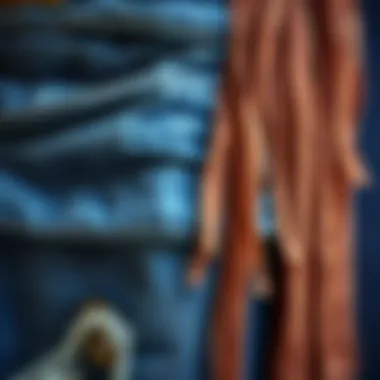
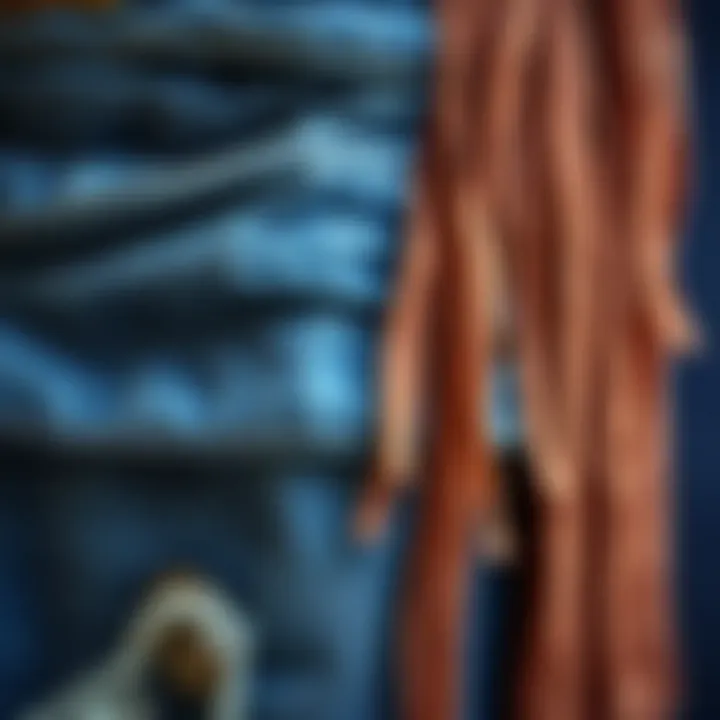
Fashion as a Statement
Fashion went beyond mere fabric and stitching; it symbolized a radical shift in values. Every piece worn was a thread in the tapestry of a larger statement, challenging societal norms and expressing dissent. The hippie look served as a visual representation of rebellion, encapsulating the fight for individualism and community spirit. While the counterculture movement provided the backdrop, the fashion choices made by hippies were a canvas on which they painted their ideals and beliefs.
Hippie Fashion Beyond the 70s
The legacy of the 70's hippie look extends far beyond its original decade, encapsulating a spirit of rebellion, freedom, and innovation that continues to shape fashion sensibilities today. This exploration of hippie fashion's longevity highlights the ways in which its core values and aesthetic have reappeared, influencing a variety of styles and movements over the years. In a rapidly changing landscape, the enduring charm of this look beckons from the past, reminding contemporary audiences of the power fashion holds in making statements about identity, beliefs, and social consciousness.
Resurgence in Popular Culture
The 70's hippie look has experienced notable revivals, particularly in the 1990s when it resurfaced in popular culture.
Revival in the 90s
During the late 90s, many cultural undercurrents began to lean towards nostalgia, leading to a resurgence in the hippie aesthetic. This push was particularly touched off by the rise of grunge music, which, though distinct, borrowed elements from hippy style. For instance, oversized flannel shirts and combat boots became staples often paired with floral prints reminiscent of the original hippie vibe. This revival wasn’t just about clothes; it was a reaction to the increasing commercialization of the fashion industry, with young people seeking a more authentic expression.
The key characteristic of the 90s revival can be noted in its blend of comfort and carefree attitude, structuring a distinctive youthful rebellion against the polished looks of the era. Although it may seem like a carefree choice, it resonated powerfully with those seeking identity in the midst of consumerism. Unique features of this revival included
- Layering: Much like the 70s, but with a focus on mixing textures and prints.
- DIY mentality: A do-it-yourself approach became widespread, including modifications to thrifted clothing.
However, this revival faced challenges, as some critics perceived it as a superficial trend rather than a sincere embrace of the associated ideals. This dual nature of nostalgia—being both a celebration and a mere commercial spectacle—established a complex framework for understanding how hippie fashion continues to echo through fashion history.
Modern Adaptations
Today, modern adaptations of the hippie look can be observed across various clothing lines and street fashion. Designers increasingly tap into the laid-back vibe of the 70’s, focusing on sustainable practices that echo the original counterculture’s ethos. For many contemporary brands, incorporating elements such as tie-dye, floral motifs, and earthy color palettes has become not just fashionable, but a way to connect with environmentally-conscious consumers.
A notable feature of modern adaptations is their emphasis on sustainability. By using eco-friendly fabrics and ethical sourcing, these designs strike a chord with consumers who align with the hippie ideology of respect for the planet.
However, the negatives of this adaptation process must also be recognized. Some feel that mainstream adaptations can dilute the original ethos, as brands often focus on profitability rather than the deeper cultural connections or ideals that defined the 70s. Thus, while these adaptations provide fresh takes, they sometimes stray from the aspirational essence of hippie culture.
Influence on Contemporary Designers
Hippie fashion’s influence on contemporary designers offers a profound insight into how past movements shape present styles. Many influential figures in today's fashion—including names like Anna Sui and Isabel Marant—draw heavily from the rich texture and color of the hippie era. These designers often incorporate flowing silhouettes, elaborate embroidery, and lush patterns reminiscent of the 70s.
Notably, this influence extends beyond seasonal collections; it promotes a deeper cultural commentary on fashion. The characterising aspect of this influence lies in its freedom from conventional standards—designs often embrace a more relaxed and holistic approach to design philosophy. This is especially relevant as today’s consumers increasingly favor authenticity over transient trends.
While this artistic liberty can inspire creativity, it also presents challenges in terms of commercial viability. Some designers may struggle to balance the expression of their vision while securing their position in a highly competitive market. This power struggle between artistic integrity and market demand represents a continuing narrative of fashion's evolution while showcasing the timeless relevance of the hippie aesthetic.
Through this examination, it becomes evident that the hippie look transcends mere fad status. Its influence is both prevalent and subtle, echoing through various aspects of modern fashion and remaining a profound touchstone in a continuously evolving cultural landscape.
Sustainability and the Hippie Aesthetic
The essence of the 70's hippie look is deeply intertwined with ideals of sustainability. Hippies were not just about vibrant colors and free spirits; they held a strong belief in living harmoniously with nature. This philosophy remains relevant today as fashion increasingly grapples with its environmental impact. The nostalgia for the hippie aesthetic in modern times carries hints of its commitment to sustainability, echoing through various fashion choices. Adopting eco-conscious methods in today’s clothing not only honors the past but also paves the way for a more responsible future.
Eco-Conscious Choices in Fashion
The choices we make in fashion today—right down to the materials we wear—tell a story. This reflects a philosophical shift in how we perceive consumption. The hippie movement emphasized a mindful relationship with the Earth, and that ethos persists through various eco-conscious choices in fashion. Let's delve into three critical aspects: the Use of Recycled Materials, Support for Ethical Brands, and Upcycling Trends.
Use of Recycled Materials
In recent years, using recycled materials in clothing has gained traction. This practice not only reduces waste but also minimizes the need for new resources. When brands incorporate recycled fabrics such as polyester made from plastic bottles or cotton from discarded garments, they contribute to a circular fashion model. This is a beneficial choice because it helps divert waste from landfills, promoting a more sustainable system in the fashion industry. Additionally, many consumers are now looking for brands that champion sustainability in their messaging. However, there's a unique challenge: recycled materials can sometimes lack the durability of their virgin counterparts, creating a presenting question of long-term wearability.
Support for Ethical Brands
Supporting ethical brands plays a significant role in promoting sustainable fashion. These brands often prioritize fair labor practices and use environmentally-friendly materials. Ethical brands not only focus on how their products are made but also consider their impact on communities and environments. They take steps to ensure that workers receive fair wages and safe working conditions. As consumers become more aware of the consequences of fast fashion, supporting these brands fosters a deeper connection to the clothing we wear. The downside? Ethical choices can be more costly, making it a privilege rather than an option for everyone.
Upcycling Trends
Upcycling has emerged as a creative response to the throwaway culture in fashion. This practice involves transforming old or unuseable items into something new and valuable, effectively giving them a second life. The beauty of upcycling lies in its creativity and uniqueness—all pieces are often one-of-a-kind. This trend is beneficial as it encourages people to think outside the box and repurpose materials instead of discarding them. Furthermore, this process aligns beautifully with the hippie ethos of self-expression and individuality. However, some may find that not every upcycled item matches their taste or style, making it a more niche market.
"Fashion changes, but style endures." - Coco Chanel
Through embracing these eco-conscious choices, today’s fashion enthusiasts can tap into the essence of the hippie look while making decisions that honor our planet. Awareness and actions surrounding sustainability not only contribute to individual style but also to a collective legacy, echoing the dream of harmony that the hippie movement cherished.
End
The journey through the vibrant tapestry of the 70's hippie look has illuminated not just a fashion trend but a potent cultural movement. This exploration serves to remind us that style is often a reflection of deeper ideals and societal currents. As we've peeled back the layers of this iconic aesthetic, it's clear that the hippie look did more than adorn the bodies of its wearers. It became a canvas for articulating values like peace, environmental consciousness, and individuality.
Reflection on the Hippie Legacy
Hippie fashion was punctuated by its freedom of expression and rejection of conventional norms. From the flowing fabrics to the eclectic mix of accessories, this style shunned uniformity in favor of personal identity. The hippie era brought forth a legacy that is still very much alive in modern fashion.
"Fashion is not just what you wear, it’s a means to express who you are. The hippie era made that message clear."
In reflecting on the hippie legacy, several critical themes emerge:
- Individuality: The 70's encouraged people to cultivate their unique styles. The mixing and matching in clothing choices paved the way for bespoke fashion narratives.
- Cultural Influence: The hippie movement sparked conversations around peace and love, influencing numerous art forms, from music to visual arts.
- Sustainability: In today’s climate-conscious landscape, the hippie philosophy resonates. Their early adoption of natural fibers and eco-friendly practices offers valuable lessons for modern consumers and designers alike.
It's captivating to think about how the hippie look has not only endured but continues to inspire contemporary designers and fashion enthusiasts. The core principles of this movement – an affinity for nature, self-expression, and a sense of community – artfully weave into current trends, shaping the world of fashion we navigate today.
Encouraging the wearers of the future to ponder, what will your style say about you?







